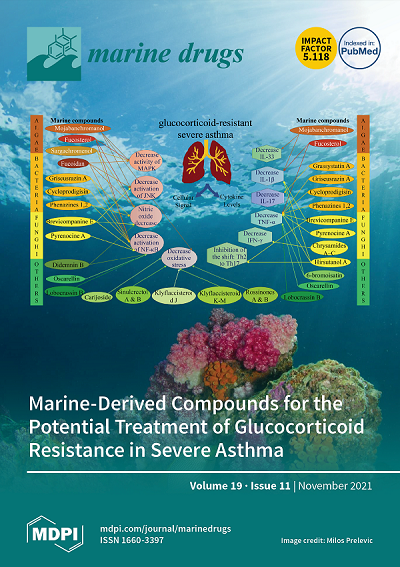Enhanced Production of High-Value Porphyrin Compound Heme by Metabolic Engineering Modification and Mixotrophic Cultivation of Synechocystis sp. PCC6803
IF 4.9
2区 医学
Q1 CHEMISTRY, MEDICINAL
引用次数: 0
Abstract
Heme, as an essential cofactor and source of iron for cells, holds great promise in various areas, e.g., food and medicine. In this study, the model cyanobacteria Synechocystis sp. PCC6803 was used as a host for heme synthesis. The heme synthesis pathway and its competitive pathway were modified to obtain an engineered cyanobacteria with high heme production, and the total heme production of Synechocystis sp. PCC6803 was further enhanced by the optimization of the culture conditions and the enhancement of mixotrophic ability. The co-expression of hemC, hemF, hemH, and the knockout of pcyA, a key gene in the heme catabolic pathway, resulted in a 3.83-fold increase in the heme production of the wild type, while the knockout of chlH, a gene encoding a Mg-chelatase subunit and the key enzyme of the chlorophyll synthesis pathway, resulted in a 7.96-fold increase in the heme production of the wild type; further increased to 2.05 mg/L, its heme production was 10.25-fold that of the wild type under optimized mixotrophic culture conditions. Synechocystis sp. PCC6803 has shown great potential as a cell factory for photosynthetic carbon sequestration for heme production. This study provides novel engineering targets and research directions for constructing microbial cell factories for efficient heme production.通过代谢工程改造和混养培养 Synechocystis sp.
血红素是细胞必需的辅助因子和铁元素来源,在食品和医药等多个领域具有广阔的应用前景。本研究以模式蓝藻 Synechocystis sp. PCC6803 作为血红素合成的宿主。PCC6803 作为血红素合成的宿主,对其血红素合成途径及其竞争途径进行了改造,从而获得了高血红素产量的工程蓝藻,并通过优化培养条件和增强混养能力,进一步提高了 Synechocystis sp.共同表达 hemC、hemF、hemH 以及敲除血红素分解途径中的关键基因 pcyA 可使野生型的血红素产量增加 3.83 倍,而敲除编码镁螯合酶亚基、叶绿素合成途径中的关键酶 chlH 可使野生型的血红素产量增加 7.96 倍;在优化的混养培养条件下,进一步提高到 2.05 mg/L,其血红素产量是野生型的 10.25 倍。Synechocystis sp. PCC6803 具有作为光合固碳生产血红素的细胞工厂的巨大潜力。这项研究为构建高效生产血红素的微生物细胞工厂提供了新的工程目标和研究方向。
本文章由计算机程序翻译,如有差异,请以英文原文为准。
求助全文
约1分钟内获得全文
求助全文
来源期刊

Marine Drugs
医学-医药化学
CiteScore
9.60
自引率
14.80%
发文量
671
审稿时长
1 months
期刊介绍:
Marine Drugs (ISSN 1660-3397) publishes reviews, regular research papers and short notes on the research, development and production of drugs from the sea. Our aim is to encourage scientists to publish their experimental and theoretical research in as much detail as possible, particularly synthetic procedures and characterization information for bioactive compounds. There is no restriction on the length of the experimental section.
 求助内容:
求助内容: 应助结果提醒方式:
应助结果提醒方式:


